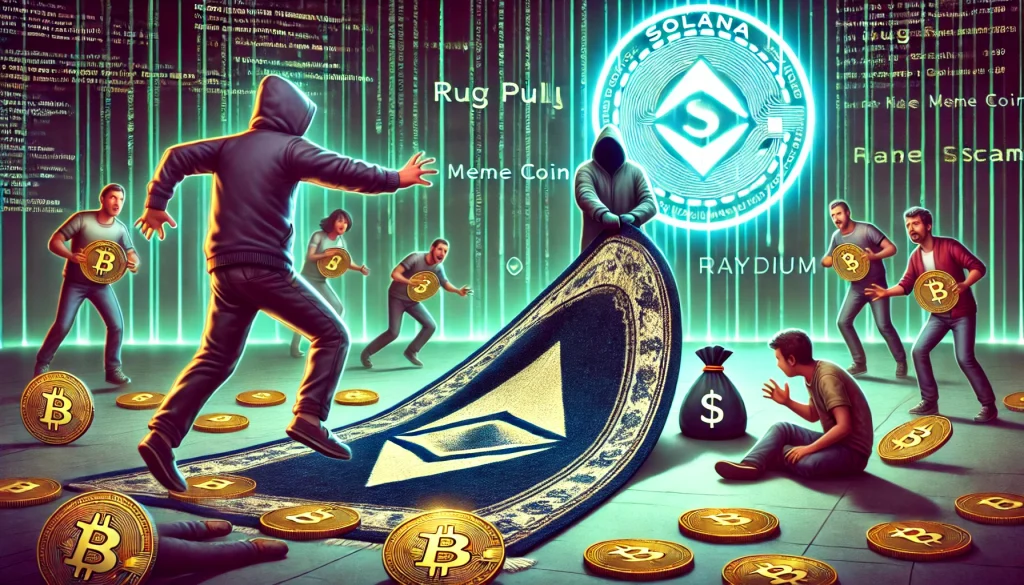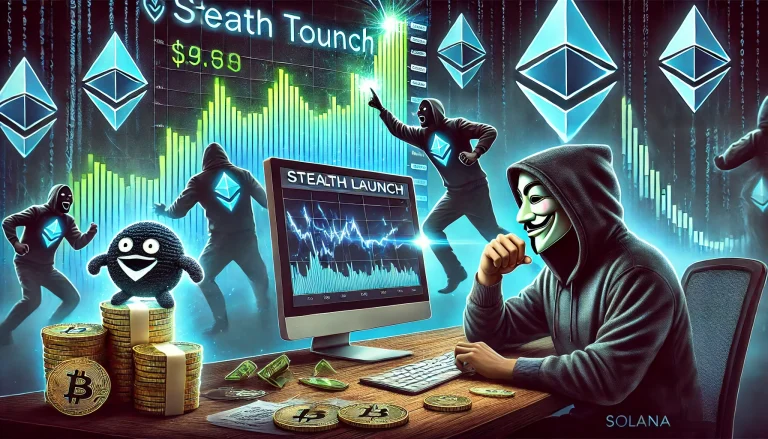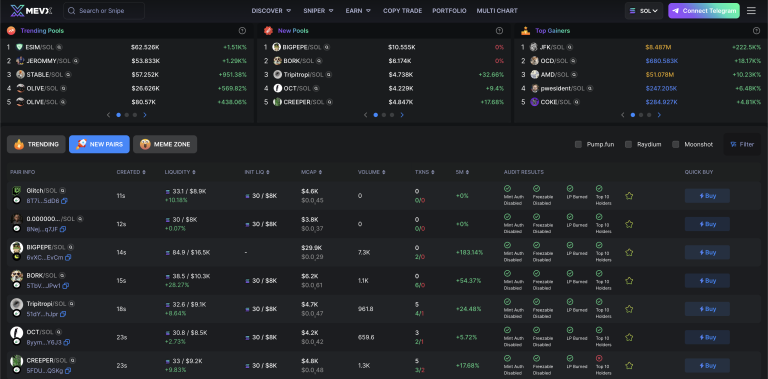Exposed: How Rug Pulls Happen on Solana

Solana has exploded in popularity thanks to its low fees, fast transactions, and meme coin culture that’s as wild as it is innovative. But where there’s hype, there’s hustle — and not always the good kind.
Rug pulls have become an all-too-common plague on Solana, draining liquidity, destroying communities, and leaving thousands of users holding worthless tokens. Whether it’s a flashy meme coin or a project that seems like the next 100x gem, rug pullers have found countless ways to scam investors. In this article, we’ll break down exactly how these scams work — especially on platforms like Raydium — and what you should watch out for.
What Is a Rug Pull?
A rug pull is when a crypto project’s developer(s) suddenly remove all the liquidity or abandon the project — effectively “pulling the rug” out from under investors. It’s the Web3 equivalent of getting pickpocketed while everyone’s cheering.
1. The Raydium Rug Pull Method
Raydium is a decentralized exchange (DEX) and automated market maker (AMM) on Solana. It allows anyone to create a token and instantly pair it with USDC, SOL, or other tokens — opening the door for scammers to deploy fake tokens in minutes.
Step-by-step of a typical Raydium rug:
- Create a Token
Using simple tools to create token (let’s call it $SCAM). - Add Liquidity
The scammer pairs $SCAM with USDC/SOL on Raydium. Usually, they’ll add a small amount of real liquidity to make it look legit (e.g. 5 SOL and a billion $SCAM). - Pump It
They begin shilling the token on Telegram, X (Twitter), Discord, or paid influencers. They might airdrop tokens to random wallets to build “hype” and generate FOMO. - Fake Lock or Renounce
Some devs fake renouncing ownership or pretend they’ve locked liquidity — often by locking a small portion and leaving the rest withdrawable. - Liquidity Pull
Once buyers start aping in and the price pumps, the scammer removes all the liquidity and vanishes. The price crashes to zero instantly. - Aftermath
The community is left in shock. Telegram disappears. X account deleted. Everyone’s bags? Worthless.
2. Mint Authority Abuse
Solana allows tokens to be minted infinitely unless the mint authority is revoked. Scammers exploit this in brutal fashion.
- How it works:
They keep mint authority active and wait until enough people buy in. Then they mint billions of new tokens and dump them into the liquidity pool, causing the price to plummet. - What to look for:
Always check if mint authority is revoked using Solana explorers like SolScan or SolanaFM. If it’s not revoked, you’re playing with fire.
3. Stealth Tax or Honeypot Contracts
Scammers use custom token logic that prevents users from selling or applies massive hidden fees.
- Honeypot: You can buy, but you cannot sell. Once you buy in, you’re trapped.
- Tax Trap: Tokens with hidden transfer taxes (e.g. 99%) where you get a tiny amount back if you sell.
These tokens usually use obfuscated code or proxy contracts to hide the trap. Raydium doesn’t filter this — it just executes swaps. So once you’re in, good luck getting out.
4. Fake Lockers and Fake Audits
Scammers often link to “audit reports” from shady sites or show “liquidity locks” on platforms nobody’s heard of — or worse, use screenshots instead of real links.
They also manipulate launch info with made-up team bios, anonymous founders, and whitepapers written by ChatGPT in five minutes. It’s all smoke and mirrors.
5. Presale Rug Pulls
Solana doesn’t have a native launchpad like Ethereum’s PinkSale, but presales are still run via Telegram groups or Google Forms.
- You send SOL to a wallet address.
- They promise to airdrop tokens after launch.
- You receive either:
- A fake token with no liquidity
- Nothing at all
- Or a legit token that rugs the next day
There’s zero protection here. You’re just trusting strangers with your money.
6. Fake Airdrops with Drainer Links
Not technically a rug pull, but worth mentioning.
Some scammers airdrop fake tokens to wallets and embed phishing links in the token metadata or description. When you try to “claim” or “sell” the token using a dodgy site, it asks for wallet approval — and drains your funds.
These are often named after real projects: $SOLANA, $USDC, $PHANTOM, etc. Don’t fall for it.
7. “Slow Rug” Schemes
This is the sneakiest kind. The devs pretend to be legit, build a community, ship updates, list on Raydium or Jupiter, and even get influencer support.
Then one day:
- They mint more tokens and dump.
- Or they unlock “locked” liquidity.
- Or they run off with the project’s marketing wallet or treasury.
These rugs are harder to detect and can happen weeks or even months after launch.
How to Protect Yourself
If you’re going to ape into Solana tokens, at least do it with your eyes open:
✅ Check These Before Buying:
- Mint authority revoked
- Freeze authority removed
- Liquidity lock on a trusted locker (e.g. Solana Lock or Team Finance)
- Smart contract is verified (if custom)
- No stealth taxes or honeypot behavior
- Dev team has some kind of reputation or history
🚩 Red Flags:
- Anonymous devs using cartoons or anime pfps
- Telegram-only community
- Zero liquidity lock or lock on sketchy platforms
- Token was launched today and already has 50+ influencers
- Liquidity < $1,000 with “market cap” of $5 million
🧠 Pro Tip:
Always use a burner wallet when testing sketchy tokens. Never expose your main wallet.
Final Thoughts
Solana is a fast, fun, and chaotic ecosystem — but rug pulls are part of the game. With tools like Raydium making it easy to launch and list tokens instantly, scammers can pull off a rug in under 10 minutes.
If you’re going to ape into random meme coins or low-cap tokens, know that you’re not “investing” — you’re gambling. And like all gambling, you should only play with what you’re willing to lose.
Stay sharp. Stay skeptical. And if it sounds too good to be true, it probably is.
If you’re building your own token (the legit kind), tools like SolTool.io let you do it securely, with renounced authority and all the safety features baked in. Start clean — and don’t be that guy who pulls the rug.






